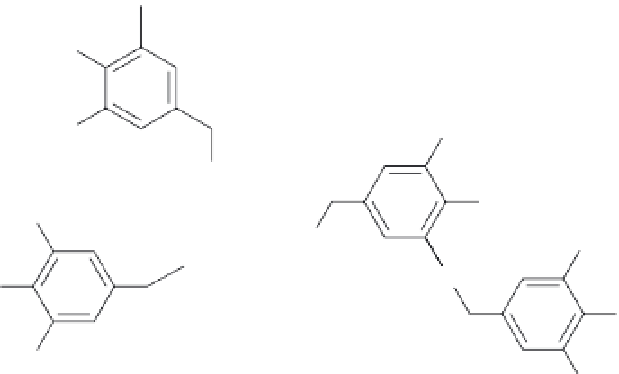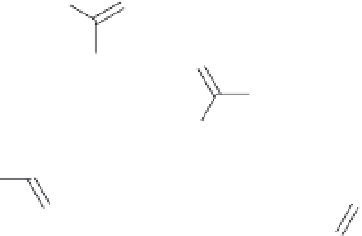Chemistry Reference
In-Depth Information
OH
HO
O
OH
HO
O
O
OH
HO
O
OH
O
O
O
HO
OH
O
OH
OH
O
HO
OH
FIGURE 6.7
An example of a tannic acid structure.
6.7 LIGNIN AND LIGNANS
Lignin is a polymer formed by the combination of three phenolic alcohols. These basic
monomeric units are the phenyl propanoids (composed of C6-C3 units). The most com-
mon units are known as coniferyl, sinapyl, and paracoumaryl alcohols
(Figure 6.8).
Different plant species have varied ratios of these monomers. For example, lignin
from the beech tree has a ratio of 100:70:7 of coniferyl:sinapyl:paracoumaryl alco-
hols. These phenyl propanoid alcohols readily undergo polymerization (Figure 6.9)
through an oxidative and free radical step, and this process is catalyzed by two dif-
ferent oxidative enzymes: peroxidases or oxidases. In this way, the lignin polymeric
matrix is created (Figure 6.10).
γ
6
α
1
5
OH
1
β
2
4
HO
3
H
3
CO
OH
2
HO
H
3
CO
OH
3
HO
OCH
3
Paracoumaryl Alcohol (1),
Coniferyl Alcohol (2), and Sinapyl Alcohol (3)
FIGURE 6.8
Three common monolignol compounds: precursors to lignin and lignans.









Search WWH ::

Custom Search